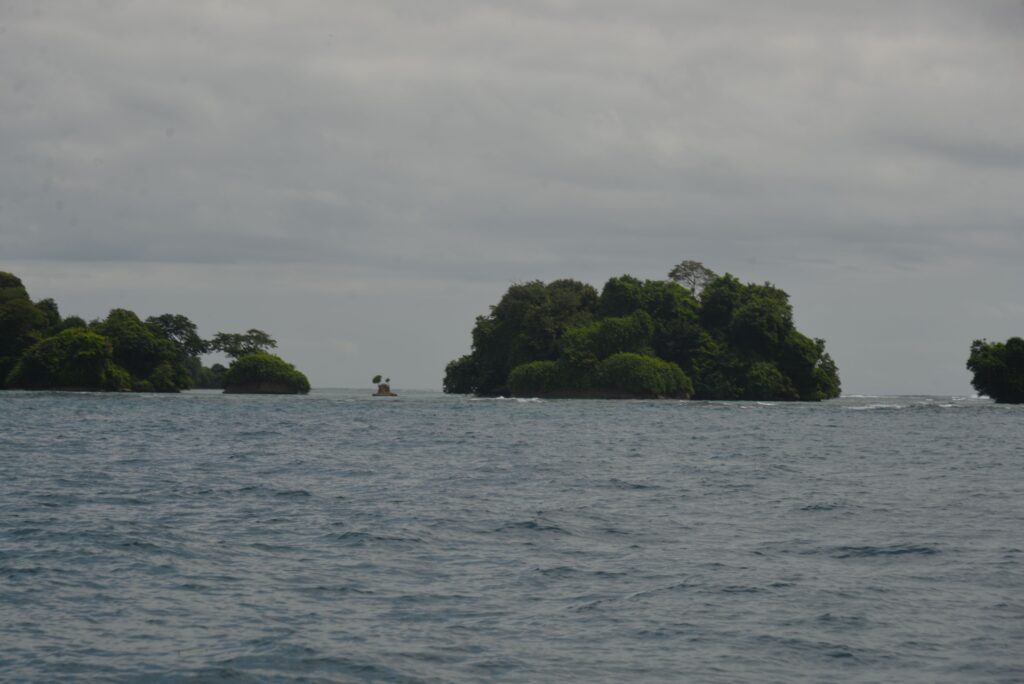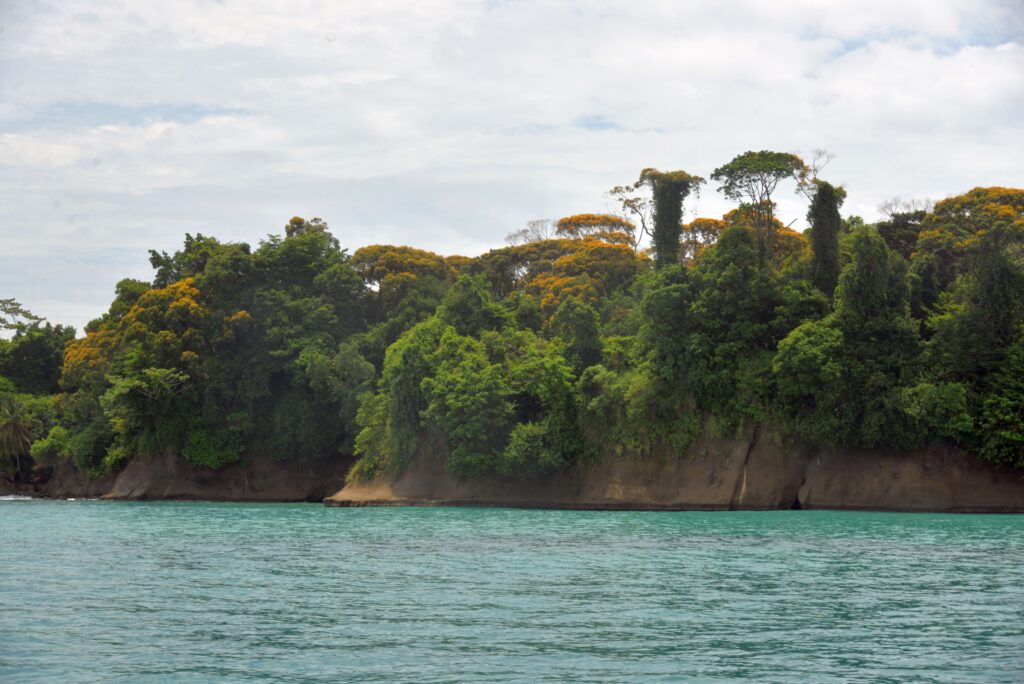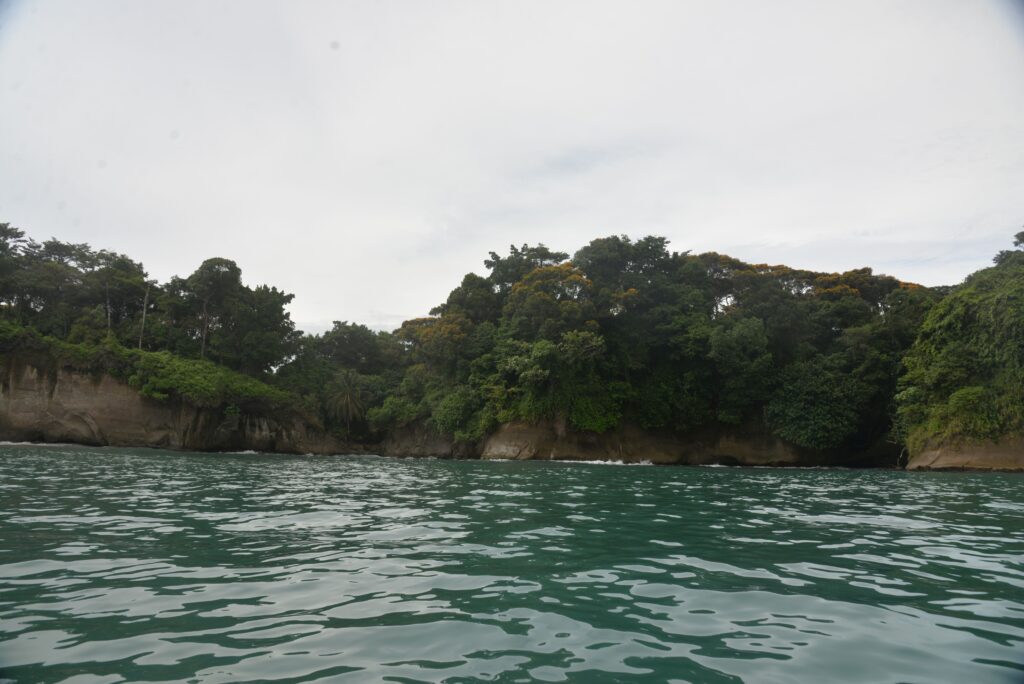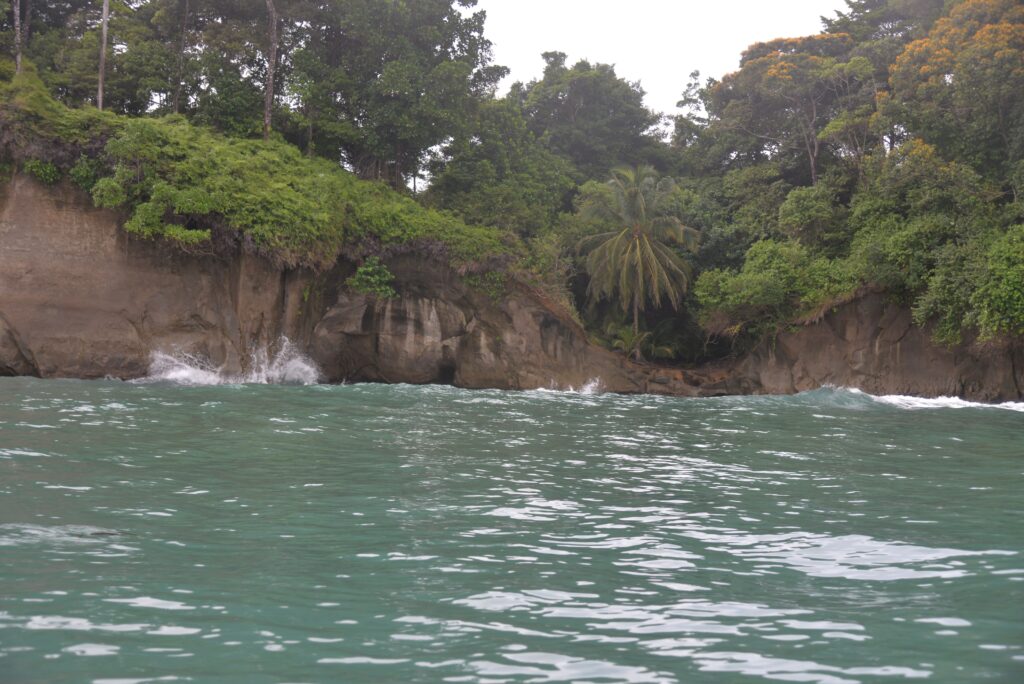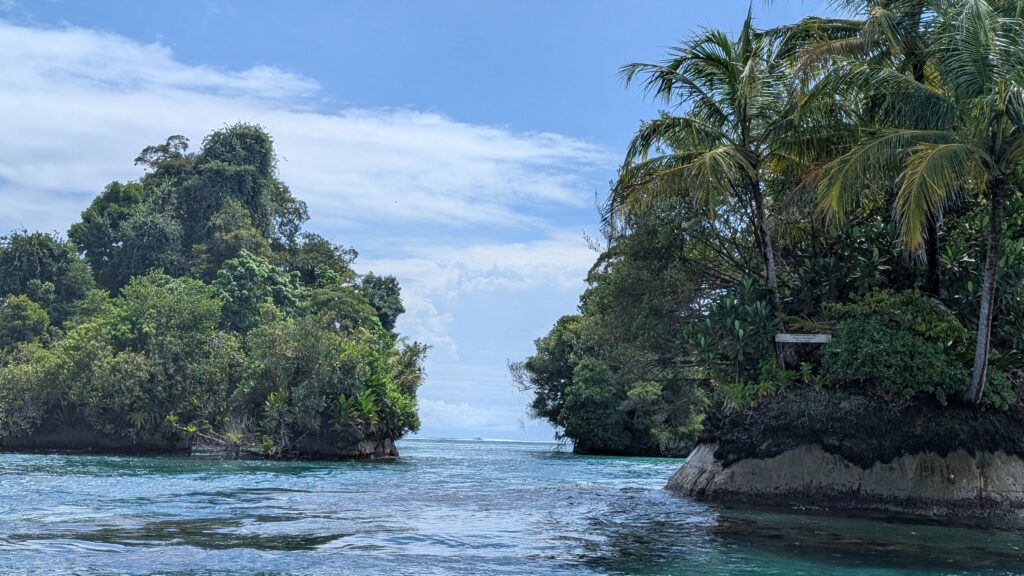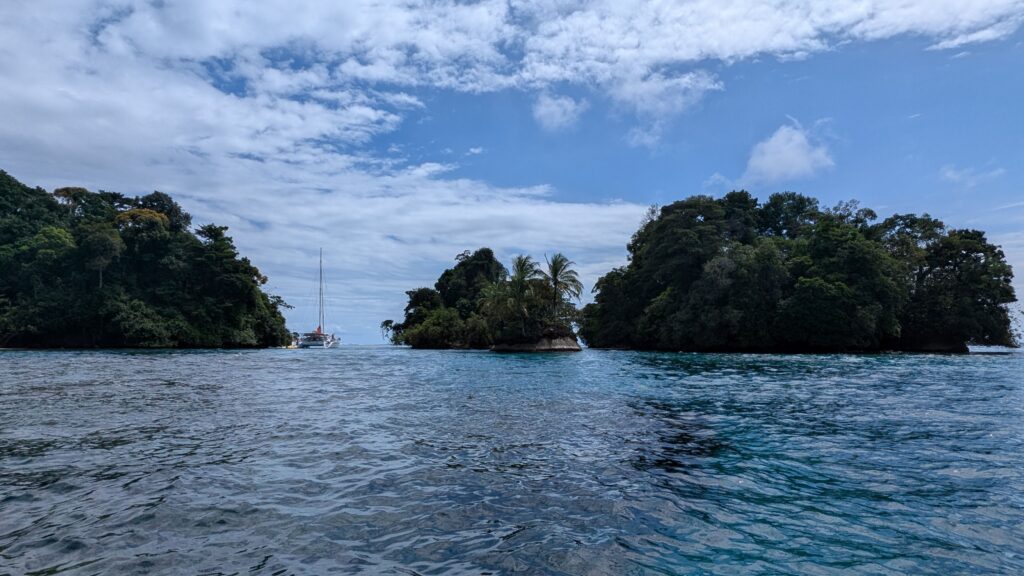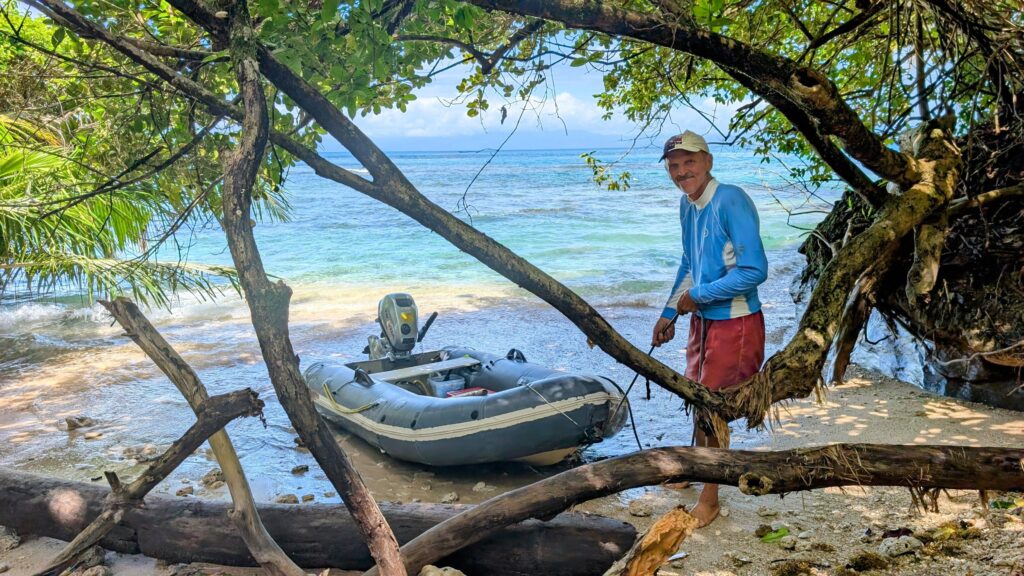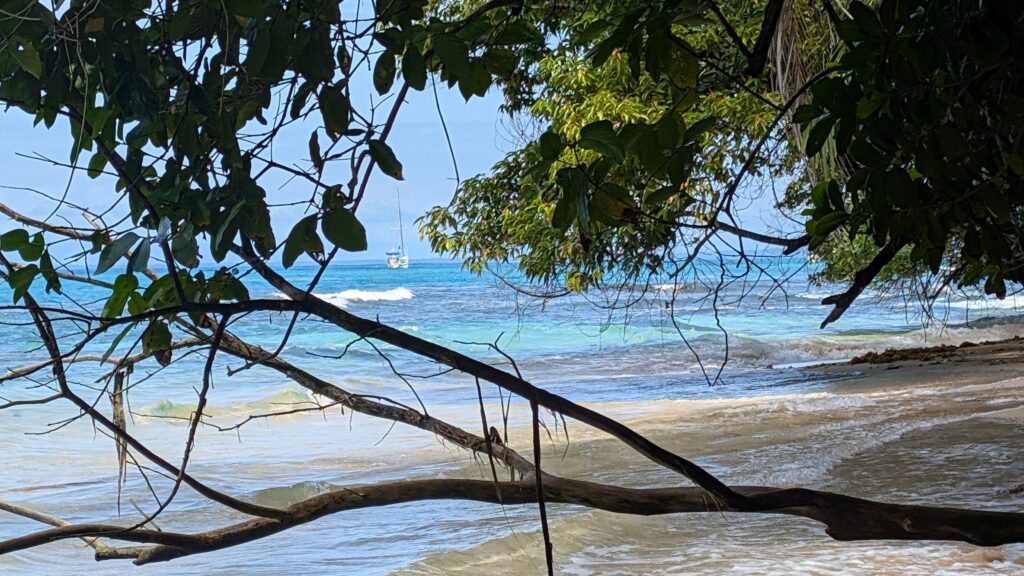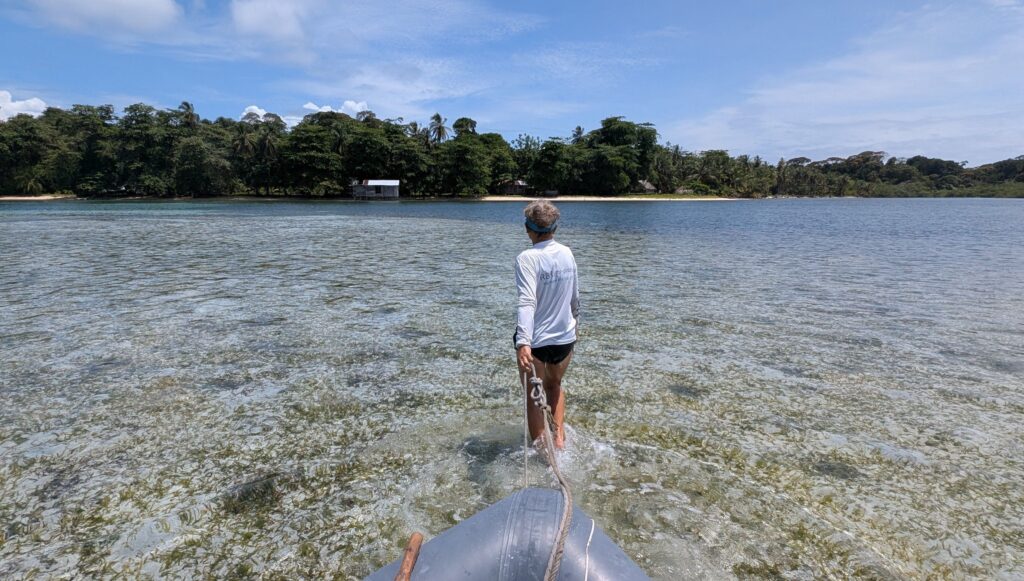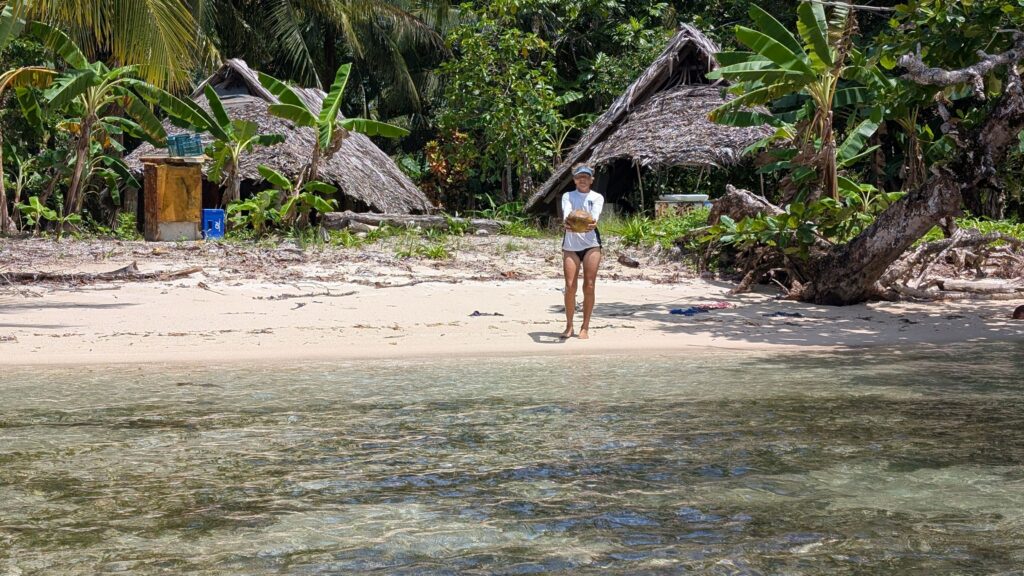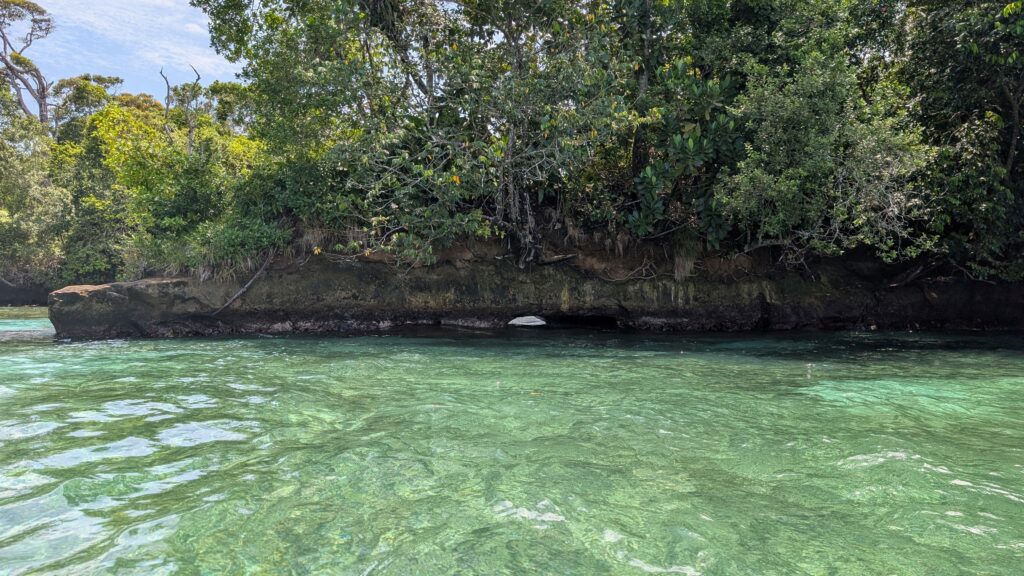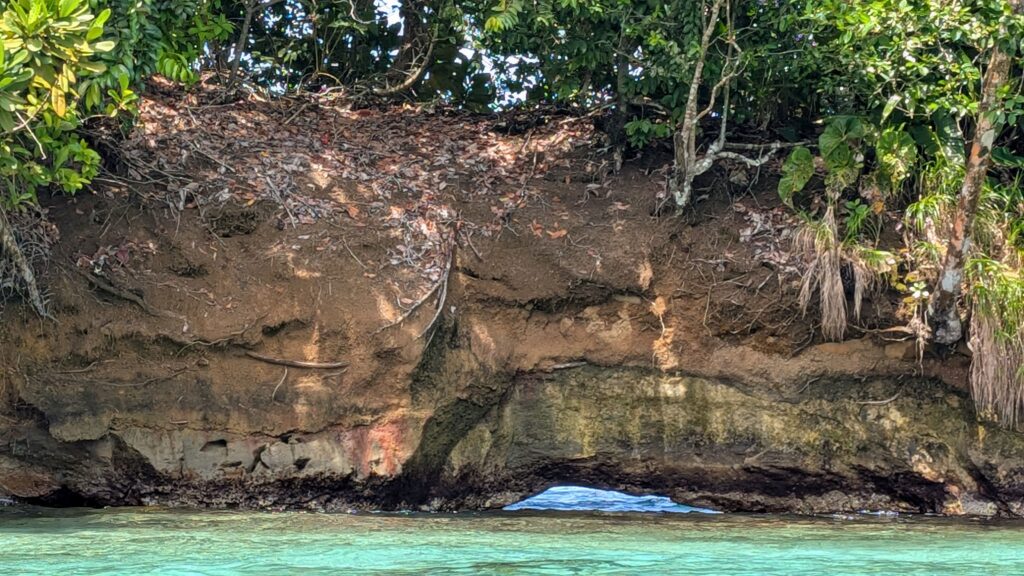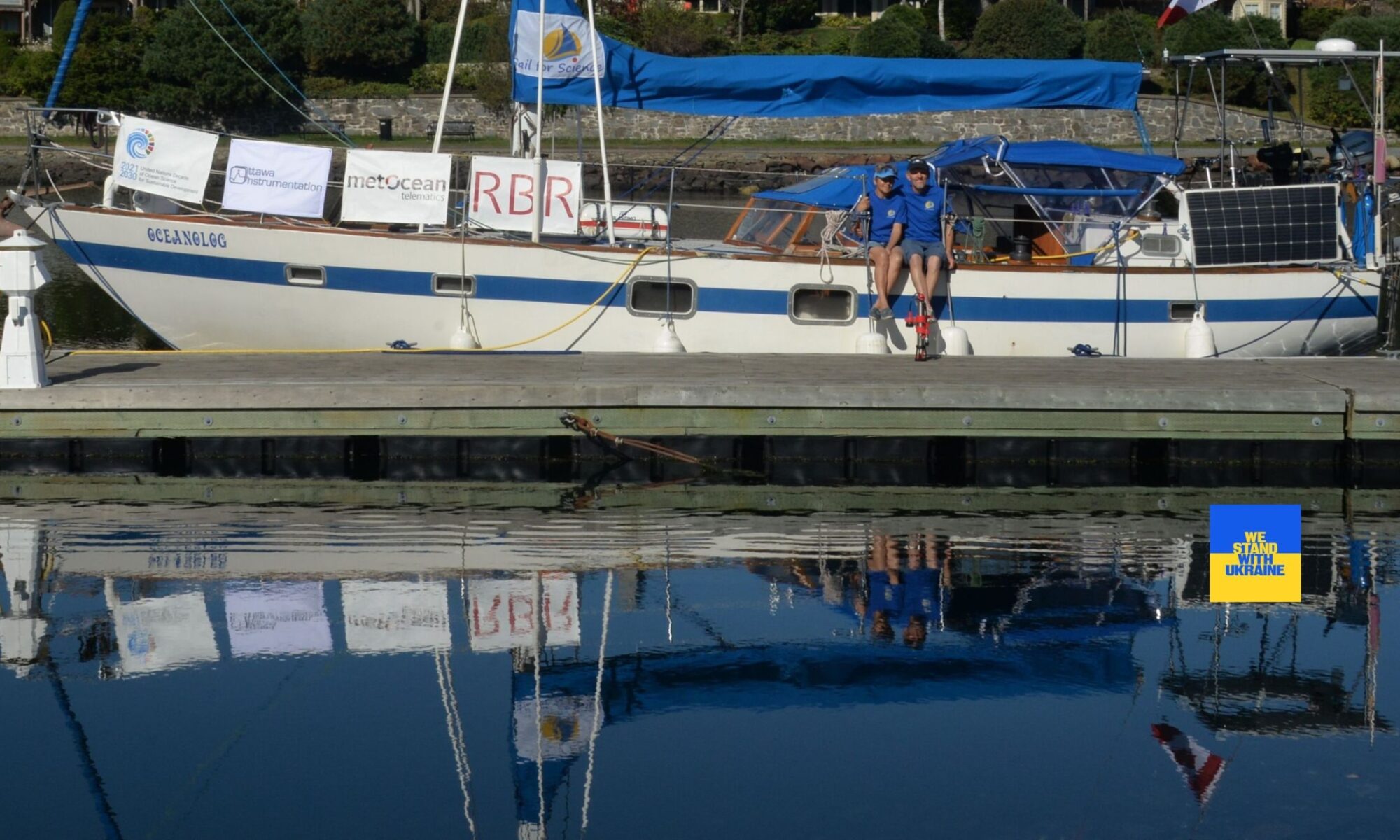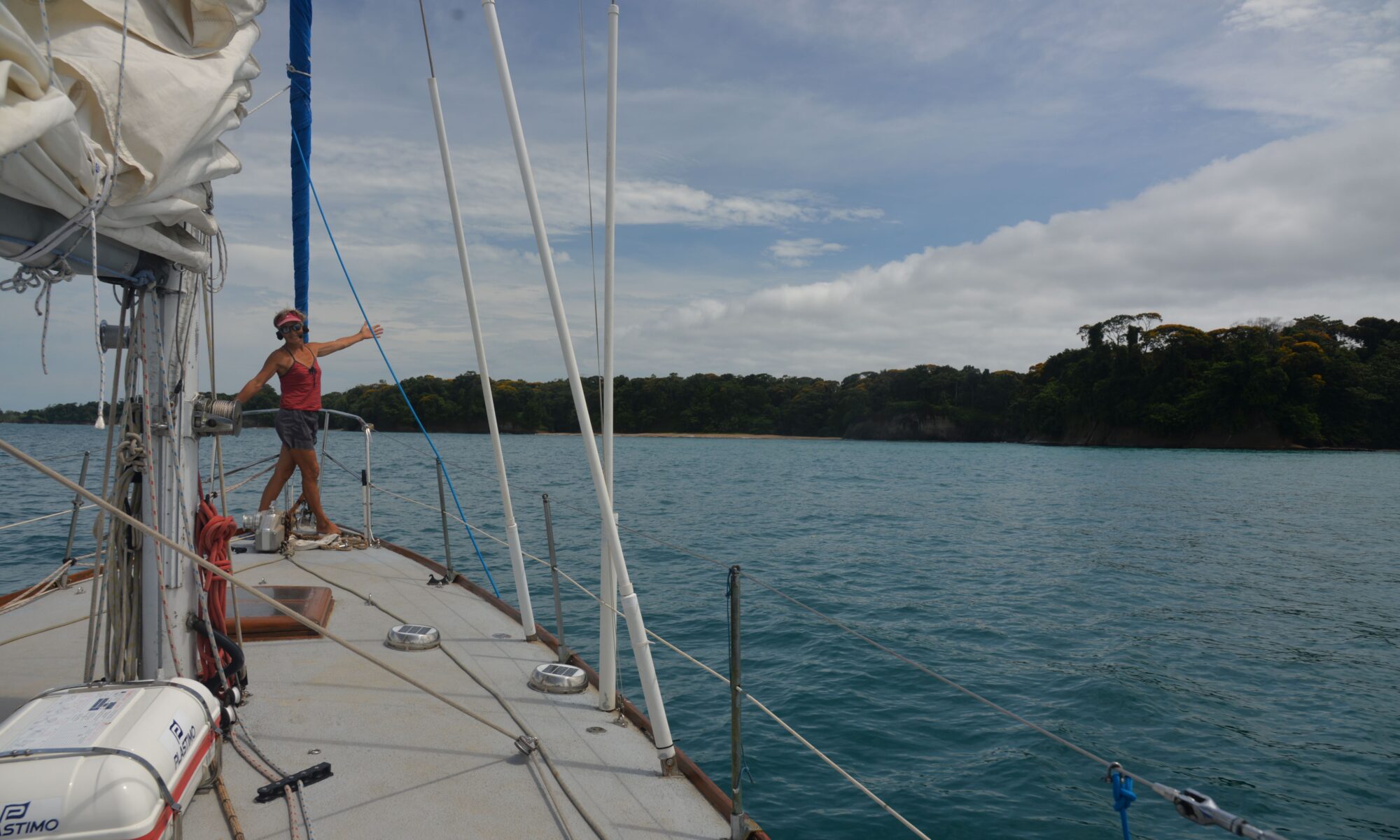On our way to Bocas del Toro, we made a rest stop at Isla Escudo de Veraguas, an unexpected gem among the Panamanian islands. Far off the beaten path, this remote island remains one of the most pristine and magical places we’ve visited during our Caribbean expedition.
As we approached, the first sight was otherworldly: dense jungle spilling over dramatic cliffs, powdery white beaches shaded by coconut palms, and crystalline waters that seemed almost too perfect to be real. No cell towers, no boats, no background hum of generators—just wind, waves, and birdsong. We anchored in a calm bay on the southern side of the island and wasted no time launching the dinghy to explore.
One of the highlights of our stay was a dinghy trip through the “Labyrinth”—a maze of narrow, winding channels carved through the mangroves and coral formations on the western shore. We weaved through towering roots and natural tunnels, navigating the twists and turns like explorers in some ancient, water-bound jungle. The water was so clear we could see every fish, sponge, and coral head beneath us.
As we exited the labyrinth on the island’s opposite side, we came across a small group of fishing huts on stilts, nestled between the mangroves and the open sea. There we met a local family who welcomed us warmly despite the language barrier. The father, a weathered fisherman, showed us his hand-carved dugout canoe and proudly offered us a look at the morning’s catch—bright reef fish and spiny lobsters. We didn’t share a language, but the exchange was full of mutual respect and warmth.
Escudo de Veraguas is a place that feels untouched by time—a wild, sacred sanctuary of biodiversity and natural beauty. It reminded us why we sail: not only to travel, but to find these forgotten corners of the world that still breathe freely.
